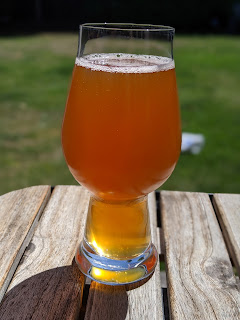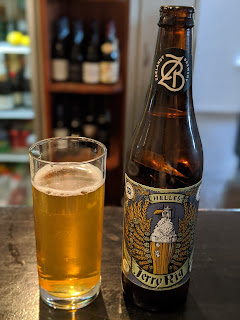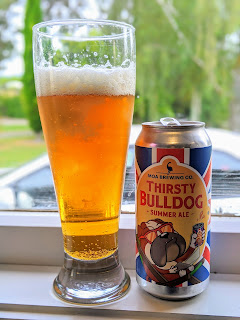Small batch Kombucha
Thought I'd give Kombucha a crack again. I did it once before, it turned out ok but not great. Used a SCOBY my wife picked up from a gym friend.
What's a SCOBY anyway? Symbiotic combination of bacteria and yeast (how come the 'o' from 'of' gets in there, but the 'a' from 'and' doesn't? Should be a SCOBAY if you ask me). From my brief googling it's got three main bugs:
1. Yeast (saccharomyces) - converts fermentable sugars to alcohol; the stuff that makes beer and other alcoholic beverages as well as bread
2. Lactobacillus - converts sugar to acetic acid (the acid in vinegar), the stuff that makes fermented vegetables like sauerkraut sour, and also what makes sourdough bread sour (a key constituent of a sourdough starter1). (Also important in vaginas, but that's another story)
3. Acetobacter - converts alcohol to acetic acid - the key bug found in "mother of vineger" - what you use to convert wine or other alcoholic drinks to vineger (also what contaminates a wine that starts to taste vinegary) - also responsible for forming the jelly blob
There's a whole lot of other bugs that probably live in SCOBies (do you add -ies to make it plural, or is it SCOBYs?), and a lot of it will be unique to any given SCOBY and probably changes over time, but those were the main three.
I didn't have a SCOBY on hand at the time, so I figured I could get these three bugs easily enough by getting some sourdough starter (which has yeast and lactobacillus) and some mother of vineger from the chunks at the bottom of a nearly empty apple cider vinegar I had in the pantry.
Ingredients
1.5L batch of 'boocha.
What's a SCOBY anyway? Symbiotic combination of bacteria and yeast (how come the 'o' from 'of' gets in there, but the 'a' from 'and' doesn't? Should be a SCOBAY if you ask me). From my brief googling it's got three main bugs:
1. Yeast (saccharomyces) - converts fermentable sugars to alcohol; the stuff that makes beer and other alcoholic beverages as well as bread
2. Lactobacillus - converts sugar to acetic acid (the acid in vinegar), the stuff that makes fermented vegetables like sauerkraut sour, and also what makes sourdough bread sour (a key constituent of a sourdough starter1). (Also important in vaginas, but that's another story)
3. Acetobacter - converts alcohol to acetic acid - the key bug found in "mother of vineger" - what you use to convert wine or other alcoholic drinks to vineger (also what contaminates a wine that starts to taste vinegary) - also responsible for forming the jelly blob
There's a whole lot of other bugs that probably live in SCOBies (do you add -ies to make it plural, or is it SCOBYs?), and a lot of it will be unique to any given SCOBY and probably changes over time, but those were the main three.
I didn't have a SCOBY on hand at the time, so I figured I could get these three bugs easily enough by getting some sourdough starter (which has yeast and lactobacillus) and some mother of vineger from the chunks at the bottom of a nearly empty apple cider vinegar I had in the pantry.
Ingredients
1.5L batch of 'boocha.
- 1.2L water
- 300g raw sugar
- 8 teabags (Twinings English Breakfast - just cause that's what I had left - could easily use green tea or any other random selection... I wonder what Chai would come out like).
- SCOBY - home made with some juice off the top of a high water content sourdough starter in the fridge overnight and a bit of mother (the goop) of apple cider vinegar.
Process
Boiled the water and then let it cool with the teabags in before discarding them at some point.
- 300g raw sugar
- 8 teabags (Twinings English Breakfast - just cause that's what I had left - could easily use green tea or any other random selection... I wonder what Chai would come out like).
- SCOBY - home made with some juice off the top of a high water content sourdough starter in the fridge overnight and a bit of mother (the goop) of apple cider vinegar.
Process
Boiled the water and then let it cool with the teabags in before discarding them at some point.
Put it in a 2L flask (which I usually use for yeast starters for beer brewing) and left it. Within a day it was bubbling away.
Tasted it after a week, slightly tangy but still very sweet, so left it another few weeks. Eventually transferred into bottles, left another 2-3 weeks to condition (further fermentation, production of carbon dioxide gas in the enclosed space of the bottle for fizz!), and then put it in the fridge...
End result....? Too sweet. Dang. Tastes alright otherwise. Good amount of fizz, nice flavour. Could have more tang. I think overall it needed longer to ferment, less sugar, and perhaps a better SCOBY. Lessons for next time - I think I'll try with half as much sugar and see how that goes.
References
1. De Vuyst L, Neysens P. The sourdough microflora: biodiversity and metabolic interactions. Trends in Food Science & Technology. 2005 Jan 1;16(1-3):43-56.
1. De Vuyst L, Neysens P. The sourdough microflora: biodiversity and metabolic interactions. Trends in Food Science & Technology. 2005 Jan 1;16(1-3):43-56.





Comments
Post a Comment